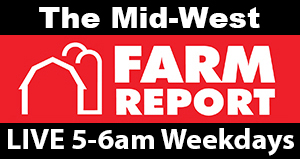
Where are fertilizer prices going? There has been a little softening in input prices, but they aren’t coming down quickly, according to an economist at the 2023 Wisconsin Agri-Business Classic. Economist Jason Troendle with The Fertilizer Institute predicts supply and prices for nitrogen, phosphorus and potash ahead of the 2023 growing season.
“The good news is fertilizer prices are actually trending down, and so they have been for the last couple of months, both on the and the P and the K side, which is good news,” he says. “We’ve seen kind of some general softening there. So as growers are heading into the spring, I think that hopefully is a welcome sight.”
This is despite ongoing supply chain hurdles and the war between Russia and Ukraine. Troendle says Ukraine’s resiliency and no new disruptions have allowed the supply chain to catch up, helping to decrease input costs.
“In terms of natural gas on the nitrogen side, sulfur on the phosphate side, some of those input costs coming down both here as well as globally, has helped to kind of relieve some of that pressure that was there,” he says.
Troendle notes that there are two main components that will influence 2023 fertilizer prices. One is the relative price between fertilizer and crop prices. As a grower determines their budget, if the margin looks good, there could be a lot of demand this spring for fertilizer inputs. Second is the weather.
“Fertilizer is typically applied in a very small window in the spring, and different crops need different amounts,” he says. “And so depending on what producers choose to grow, that will affect how much they need and then can they get in the field, or will we experience any challenges with that that would leave additional supplies or stronger carryover that would cause prices to soften.”
Taking a look at nitrogen, phosphorus and potash separately, Troendle says each will face different challenges in 2023.
He says The Fertilizer Institute is watching two components when it comes to nitrogen. The first question is: Where will natural gas prices go? This is because natural gas is the key feedstock for ammonia and all other nitrogen fertilizers. So far, it’s been trending favorably here in the U.S. and globally. The second question is: Will exporting nitrogen persist?
“We’ve actually been exporting more nitrogen products than normal, potentially making up for some of the production shortfalls in other places,” Troendle says. “So does that persist or do we kind of get back to importing more of a normal amount here in the U.S?”
On the phosphorus side, TFI is watching domestic production and utilization. And on the potash side, TFI is watching Canada’s exports to the U.S.
Troendle has four solutions to help farmers navigate price volatility in the fertilizer market.
- understand your needs: if you haven’t been soil testing, if you don’t know what nutrients you need to grow the crop and the target yield that you want, you could be over applying or underplaying
- following the ‘4 Rs’ and conservation practices: how do you be sure that the product you’re putting on that’s high priced is going to be used as optimally as possible without having losses to the environment and things like that?
- communicate, communicate, communicate: relationships with your retailers and with your agronomists are really important; let them know what you’re hoping for, what are your goals, what products do you need, when do you need them, and work with them to ensure that you’re going to be able to get the product when you need it at your farm
- mitigate risk any way you can in terms of locking in output prices and then working backwards from there to budget for input prices, and then focus on an average cost of those input prices, not necessarily the one time costs as you kind of layer in purchases over time

Leave a Reply